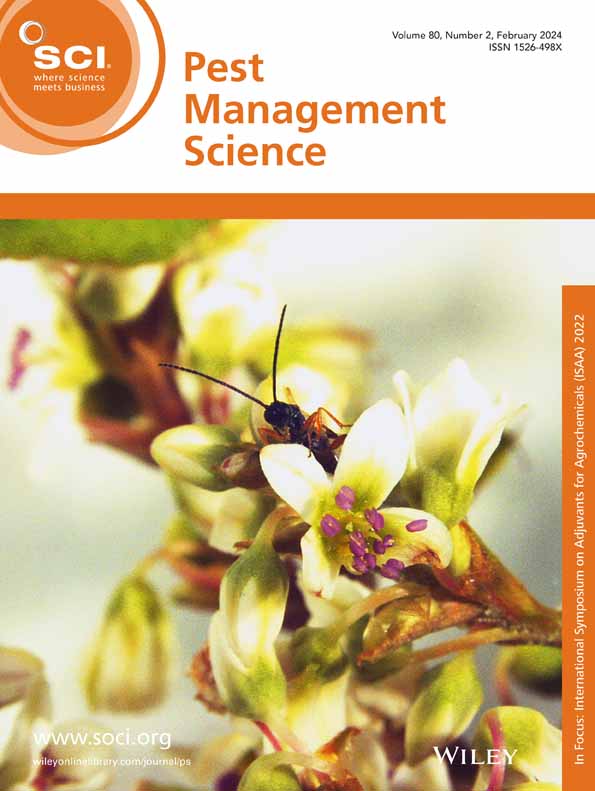History and future perspectives of spinosad for mosquito control
IF 3.8
1区 农林科学
Q1 AGRONOMY
引用次数: 0
Abstract
Since the initial discovery of the soil-dwelling actinomycete Saccharopolyspora spinosa in 1982, its metabolites spinosyns and modified spinosoids have been developed to control a wide variety of arthropod pests of economic importance. The most intensively studied are spinosad consisting of natural spinosyn A and D, as well as spinetoram comprising modified spinosyn J and L. The unique mode-of-action, high bioactivity and generally benign environmental safety profile of spinosyns add significant value to this class of pesticides of natural origin. Currently, products based on spinosad and spinetoram are available in >85 countries since initial global registration in 1996. In the US, spinosad and spinetoram are found in >80 registered pesticide products, mostly being used on agricultural crops, ornamental plants, stored grains, urban environments, and pets. Some spinosad products are approved for use in organic farming. Since the earliest recognition and registration of spinosad products for mosquito control in the 2000s, numerous customized formulations have been developed and registered for controlling different mosquito species in diverse habitats. Thus far, satisfactory bioactivities and effectiveness against mosquitoes by available products have been documented worldwide. At the same time, concerns over nontarget aquatic invertebrate fauna have gradually emerged when considering spinosad as a relatively selective pesticide. Resistance and cross-resistance following repeated applications, and their management are of pressing concern. © 2025 Society of Chemical Industry.

spinosad灭蚊的历史和未来展望
自 1982 年首次发现生活在土壤中的放线菌 Saccharopolyspora spinosa 以来,人们已经开发出其代谢物旋光菌素和改性旋光菌素,用于防治多种具有重要经济价值的节肢动物害虫。研究最深入的是由天然刺桐素 A 和 D 组成的刺桐素,以及由改性刺桐素 J 和 L 组成的刺桐素。刺桐素独特的作用模式、高生物活性和普遍良性的环境安全性,为这一类天然杀虫剂增添了重要价值。自 1996 年在全球首次登记以来,目前已有 85 个国家可以买到基于 spinosad 和 spinetoram 的产品。在美国,80 种注册农药产品中含有 spinosad 和 spinetoram,主要用于农作物、观赏植物、谷物储藏、城市环境和宠物。一些辛硫磷产品被批准用于有机农业。自 2000 年代菠菜苷产品最早被认可和登记用于灭蚊以来,已开发和登记了许多定制配方,用于控制不同栖息地的不同蚊虫种类。迄今为止,全球范围内现有产品的生物活性和灭蚊效果都令人满意。与此同时,考虑到 spinosad 是一种选择性相对较强的杀虫剂,对非目标水生无脊椎动物的担忧也逐渐显现出来。反复施用后产生的抗药性和交叉抗药性及其管理是亟待解决的问题。© 2025 化学工业协会。
本文章由计算机程序翻译,如有差异,请以英文原文为准。
求助全文
约1分钟内获得全文
求助全文
来源期刊

Pest Management Science
农林科学-昆虫学
CiteScore
7.90
自引率
9.80%
发文量
553
审稿时长
4.8 months
期刊介绍:
Pest Management Science is the international journal of research and development in crop protection and pest control. Since its launch in 1970, the journal has become the premier forum for papers on the discovery, application, and impact on the environment of products and strategies designed for pest management.
Published for SCI by John Wiley & Sons Ltd.
 求助内容:
求助内容: 应助结果提醒方式:
应助结果提醒方式:


